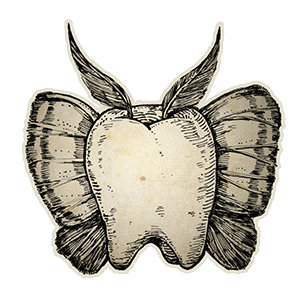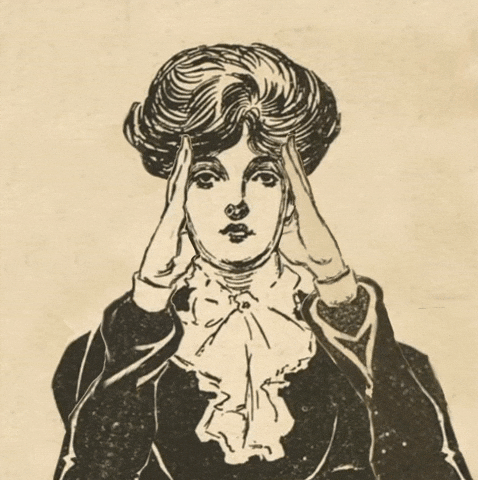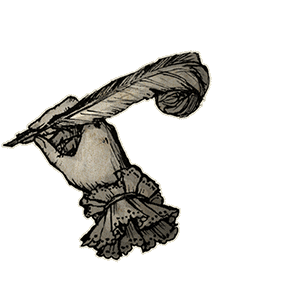Want to create interactive content? It’s easy in Genially!
Jane Eyre
Stm9zaxtv
Created on February 25, 2024
Over 30 million people create interactive content in Genially
Check out what others have designed:
Transcript
Important Quotes
Biography
Religion
Anxiety and Uncertainty
Social Class
Love Versus Autonomy
Gender Relations
Plot
Bertha Mason
Jane Eyre
St. John Rivers
Secondary Characters
Edward Fairfax Rochester
By Christian Bonerba & Marco Iannone
JANE EYRE
Jane Eyre, novel by Charlotte Brontë, first published in 1847 as Jane Eyre: An Autobiography, with Currer Bell (Brontë’s pseudonym) listed as the editor. Widely considered a classic, it gave new truthfulness to the Victorian novel with its realistic portrayal of the inner life of a woman, noting her struggles with her natural desires and social condition
Jane struggles continually to achieve equality and to overcome oppression. In addition to class hierarchy, she must fight against patriarchal domination—against those who believe women to be inferior to men and try to treat them as such. Three central male figures threaten her desire for equality and dignity: Mr. Brocklehurst, Edward Rochester, and St. John Rivers. All three are misogynistic on some level. Each tries to keep Jane in a submissive position, where she is unable to express her own thoughts and feelings. In her quest for independence and self-knowledge, Jane must escape Brocklehurst, reject St. John, and come to Rochester only after ensuring that they may marry as equals. This last condition is met once Jane proves herself able to function, through the time she spends at Moor House, in a community and in a family. She will not depend solely on Rochester for love and she can be financially independent. Furthermore, Rochester is blind at the novel’s end and thus dependent upon Jane to be his “prop and guide.”
Gender Relations
Important Quotes
"Do you think because I am poor, obscure, plain and little, I am soulless and heartless? You think wrong! I have as much soul as you, – and fill as much heart ! And if God has gifted me with some beauty and much wealth, I should have made it as hard for you to leave me as it is now for me to leave you!" "All my heart is yours, sir: it belongs to you: and with you it would remain, were fate to exile the rest of me from your presence forever." "I am no bird; and no net ensnares me: I am a free human being with an independent will." "It is in vain to say human beings ought to be satisfied with tranquillity: they must have action, and they will make it if they cannot find it."
Plot
When the story starts, Jane Eyre is a 10-year-old orphan. She lives with her uncle's family because her parents died of typhus. Except for the nursemaid, her uncle's family treats her poorly. Later, they send her to Lowood Institution, a strict school for poor children. Jane and the other girls there are treated badly. "Lowood" means is the “low” point in Jane’s young life. Despite all this, Jane becomes stronger and more confident. As a young adult, after spending years as a student and then a teacher at Lowood, Jane gathers the courage to leave. She becomes a governess at Thornfield Hall, where she meets her handsome and mysterious employer, Edward Rochester. Jane takes care of Adèle, Rochester's daughter from a past relationship, and becomes friends with Mrs. Alice Fairfax, the housekeeper. Jane falls in love with Rochester, even though he's expected to marry a woman named Blanche Ingram. Eventually, Rochester also falls in love with Jane and asks her to marry him. But on their wedding day, Jane learns that Rochester is already married to a woman named Bertha Mason, who is locked away because she's mentally ill. Rochester still wants to be with Jane, but she refuses and leaves Thornfield. Jane is taken in by people who she later finds out are her relatives. One of them is St. John, who is a religious man. He offers her a job and suggests they get married and become missionaries in India. Jane agrees to go with him but not as his wife. However, St. John keeps pressuring her to marry him. Jane is unsure about what to do, so she prays for guidance. Just then, she hears Rochester calling out to her. Jane returns to Thornfield and finds that the house has burned down, set on fire by Rochester's wife, who then died. Rochester tried to save her and ended up being blinded in the process. Reunited, Jane and Rochester marry. Rochester later regains some of his sight, and the couple have a son.
Jane Eyre is critical of Victorian England’s strict social hierarchy. Brontë’s exploration of the complicated social position of governesses is perhaps the novel’s most important treatment of this theme. Jane is a figure of ambiguous class standing and, consequently, a source of extreme tension for the characters around her. Jane’s manners, sophistication, and education are those of an aristocrat, because Victorian governesses, who tutored children in etiquette as well as academics, were expected to possess the “culture” of the aristocracy. Yet, as paid employees, they were more or less treated as servants; thus, Jane remains penniless and powerless while at Thornfield. Jane’s understanding of the double standard crystallizes when she becomes aware of her feelings for Rochester; she is his intellectual, but not his social, equal. Even before the crisis surrounding Bertha Mason, Jane is hesitant to marry Rochester because she senses that she would feel indebted to him for “condescending” to marry her. Jane’s distress, which appears most strongly in Chapter 17, seems to be Brontë’s critique of Victorian class attitudes.
Social Class
The protagonist and narrator, Jane is an orphaned girl caught between class boundaries, financial situations, and her own conflicted feelings. In her youth and again as a governess, Jane must depend on others for support. Jane feels isolated, and strives for her personal freedom and meaningful connections with others—to find the loving family she never had. Jane is intelligent, imaginative, and principled. She defies many restrictive social conventions, especially those affecting women. As the novel progresses, Jane learns to temper her passions with self-control—she controls her feelings with judgment based on self-respect and Christian humility. She must reconcile her contradictory desires to be both independent and to serve a strong-willed man. Religion helps Jane to gain a mature understanding of herself as a self-respecting individual who credits her feelings, but also defers to God.
Jane Eyre
A parson with two sisters at Moor House, and Jane's cousin. Much like Jane, St. John is a restless character, searching for a place and purpose in life. Like Mr. Rochester, St. John has a commanding personality, but the two men contrast in their range of feelings. St. John relinquishes worldly happiness for a commitment to his religious principles. His stern religious faith makes him self-denying and cold.
St. John Rivers
Adèle Varens Jane's young pupil at Thornfield, who is Mr. Rochester's ward. As Jane reforms Adèle's "French" characteristics with an English education, she symbolically restores Mr. Rochester's morality from his previous lifestyle. Céline Varens Adèle's mother, Céline Varens is a flirty French singer who was also Mr. Rochester's mistress. As Rochester's mistress, Céline was essentially a hired woman, submitting to the shallow status of a dependent. She represents the opposite of what Jane wants in her relationship. Blanche Ingram A beautiful socialite who wants to marry Mr. Rochester. Blanche embodies the shallow and class-prejudiced woman of the old aristocracy. Rosamond Oliver A rich and beautiful woman who supports Jane's school at Morton. She loves St. John, but marries a wealthy man when it becomes clear that St. John's focus is on his missionary work. Diana and Mary Rivers Jane's cousins and St. John's sisters. Similar to Jane in intellect and personality, they show Jane heartfelt compassion that contrasts with St. John's more dutiful sense of charity.
Secondary Characters
Rochester's insane Creole wife from Jamaica who is locked away on the third floor of Thornfield. Bertha is portrayed less as a human being than as a Gothic monster or a vampire. Because of her Creole or mixed race parentage, Bertha reveals Victorian prejudices about other ethnicities. She represents Rochester's monstrous secrets.
Bertha Mason
Brontë uses Gothic imagery to evoke anxiety and uncertainty about Jane's place in the world, especially through supernatural elements. The red-room, associated with Uncle Reed, symbolizes Jane's unsettled past and the absence of a secure home. The storm that damages the chestnut tree where Jane and Rochester kiss forebodes potential obstacles to their happiness, suggesting that Jane's future with him is uncertain. Bertha's role as a Gothic double of Jane underscores anxieties about Jane marrying Rochester and challenges to Victorian social norms. These elements highlight Jane's fear and the ambiguity of her social status.
Anxiety and Uncertainty
Author’s Biography
Charlotte Brontë was a famous English writer. She was born on April 21, 1816, in Thornton, Yorkshire, England. Charlotte grew up in a family of six children, including her sisters Emily and Anne, who also became writers. Her most famous work is the novel "Jane Eyre". Charlotte Brontë's writing was revolutionary for its time because it featured strong, independent female characters and addressed social issues such as class inequality and the role of women in society. Charlotte Brontë passed away on March 31, 1855, at the age of 38, but her legacy as one of the greatest writers in English literature lives on through her timeless works
In the novel, Jane Eyre grapples with the conflict between moral obligation and personal fulfillment, encountering three distinct religious figures: Mr. Brocklehurst, Helen Burns, and St. John Rivers. Mr. Brocklehurst embodies hypocritical Evangelicalism, emphasizing austerity while hypocritically indulging in luxury. Helen exemplifies passive Christianity, advocating for endurance in suffering. St. John represents ambitious, duty-driven faith, urging Jane to sacrifice personal desires for a greater cause. Jane rejects each model, ultimately forming her own understanding of faith and morality.
Religion
Jane Eyre is very much the story of a quest to be loved. Jane searches, not just for romantic love, but also for a sense of being valued, of belonging. Thus Jane says to Helen Burns: “to gain some real affection from you, or Miss Temple, or any other whom I truly love, I would willingly submit to have the bone of my arm broken, or to let a bull toss me, or to stand behind a kicking horse, and let it dash its hoof at my chest” (Chapter 8). Yet, over the course of the book, Jane must learn how to gain love without sacrificing and harming herself in the process. Her fear of losing her autonomy motivates her refusal of Rochester’s marriage proposal. Jane believes that “marrying” Rochester while he remains legally tied to Bertha would mean rendering herself a mistress and sacrificing her own integrity for the sake of emotional gratification. On the other hand, her life at Moor House tests her in the opposite manner. There, she enjoys economic independence and engages in worthwhile and useful work, teaching the poor; yet she lacks emotional sustenance. Although St. John proposes marriage, offering her a partnership built around a common purpose, Jane knows their marriage would remain loveless.
Love Versus Autonomy
The wealthy master of Thornfield Hall and Jane's employer and, later, her husband. Over the course of his life, he grows from a naive young man, to a bitter playboy in Europe, to a humble yet still strong man worthy of Jane. Both share similar virtues and seek their personal redemption. Yet Rochester errs in giving more rein to his feelings than his judgment and in expecting the world to submit to his will, as when he tries to marry Jane while still concealing Bertha and his secrets. In his distress after losing his eyesight, Rochester comes to accept his need of guidance and respect for God. His final strength comes from his newfound humility.





